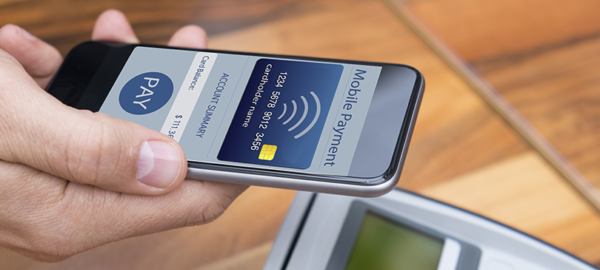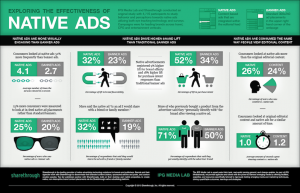— April 18, 2018

I recently had the honor of speaking at 2018 CBA LIVE with Kevin King from ID Analytics. It was a truly remarkable event with inspiration around every corner. We felt at home in our session on the growing risks of synthetic identity theft per the conference’s “Beyond The Bank” theme this year.
CBA LIVE Beyond the Bank perfectly framed the collective conversation, as it encompassed consumers’ growing demands within the space that are increasingly falling outside the traditional banking realm.
Digital payment innovations took center stage at sessions throughout the event. In fact, digital payment options are now preferred by 47 percent of consumers, compared to 43 percent still opting for cash.
It has become paramount that banks and credit unions consider this shift and are actively working to keep up with advancing tech. Plus, as highlighted throughout CBA LIVE, financial institutions must understand the widespread impact of these digital tools (for better or worse), as well as the vital role they play in the consumer experience.
Let’s explore some key digital payment innovations that are driving this shift away from cash. By identifying what makes digital payments the preferred choice amongst consumers, we can better understand the financial landscape and help find guidance for the future.
Digital Payment Innovations: 4 Must-Watch Trends
Explore the digital payment innovations that have “clicked” with consumers:
1. Peer-to-Peer Transactions (P2P)
P2P transactions are electronic money transfers made from one person to another through an intermediary service. In 2017, 63.5 million consumers used a P2P payment app at least once a month, which is nearly one-third of all smartphone users.
PayPal, Venmo, and Zelle are some of the largest P2P intermediaries. However, new fintech firms are emerging as P2P matures out of the early adopter phase.
The success of P2P stems from its ability to seamlessly solve everyday problems, in an application format that’s familiar to digital consumers. Once cash-based payment scenarios — like paying the babysitter or sending loved ones money — can now be accomplished with a single click.
Thanks to recent industry partnerships and widespread data-sharing, this payment method will continue to grow as users become more familiar and trusting of this once futuristic option.
2. Mobile Commerce (mCommerce)
In Visa’s Emerging Trends in Payments session at CBA LIVE, mCommerce was at the forefront of the conversation. mCommerce encompasses all transactions that take place on a mobile device — including mobile-optimized websites and applications.
Visa reports sales on mobile devices are growing 53 percent faster than desktop eCommerce. While mobile functionality is nothing new in the payments world, it’s only now gaining widespread acceptance after years in the market. Consumers simply needed time and incentive to feel confident using mCommerce.
Payment wearables hope to be the successor to mobile. This forecast is leading banks and credit unions to watch the wearables market closely and derive best practices from leaders in the space.
3. Artificial Intelligence (AI)
Spawned from big data and machine learning, AI is transforming the way we understand and interact with accountholders. While it opens new doors in terms of customer experience (e.g. smart chatbots, tailored offerings), AI also provides a layer of security once unheard of.
By understanding consumer behavior on a new level, financial institutions can more accurately validate an individual’s identity and thwart account takeover and other forms of fraud. This is exceptionally crucial considering the recent spike in both new account fraud and account takeover fraud.
AI is not foolproof just yet. It will need time to mature and will likely be assisted by widespread use in non-financial sectors. Once consumers become familiar with “smart” digital experiences, banks and credit unions can capitalize on strategy-rich AI initiatives.
4. Payment Network Advances
Digital payment innovations have been made possible through payment network advances and collaborations — even gaining a major boost for EMV. While payment accounts were traditionally identified by account numbers, today, EMV technology has replaced those identifiers with unique single-use codes.
This fundamental change has created more secure payments, primarily for in-person digital transactions, but has also allowed financial institutions to more securely leverage APIs and outside collaboration to create digital payment innovations while remaining (largely) in-control of their accountholders’ data.
But while it’s a breeding ground for creativity, security concerns are always a present risk. Last month, a major Indian bank was the most recent victim of this faux-pas after they detected a bug in a digital payment application that allowed pilfering small amounts from multiple accounts.
Analyzing Innovation: The Keys to Success
So, what makes these digital payment innovations, well, innovative? Sure, a new product can capture our excitement for a moment, but the innovations discussed at CBA LIVE were far from new. In fact, many had been poised to take over the market for some time.
Analyzing emerging trends highlights the trifecta surrounding innovation: security, familiarity, and incentive. Digital payment innovations must answer real-world problems and come in a package that’s familiar to navigate — while also reinforcing our increased needs for security.
The industry can’t afford to innovate just for the sake of innovating. The risks are far too great to introduce a data-rich digital tool that adds little to no value to the accountholder experience.
What risks, you ask?
In 2017, there were 178 million sensitive records exposed in data breaches across the U.S. These records contained highly-sensitive personally identifiable information (PII), including names, Social Security numbers, and financial account information.
Such attacks were often committed to facilitating identity theft and fraud — leading to record-breaking identity crime rates. Altogether, it left consumers exhausted, annoyed and afraid for their personal and financial well-being.
Criminals are easily getting their hands on PII, and it has undoubtedly slowed the adoption of digital payment innovations. Consumers are thinking twice about just how safe these unfamiliar payments are. This reluctant attitude towards digital payment innovations has major ramifications on the entire financial process.
Lagged Adoptions Means Lost Opportunities
Unfortunately, slow adoption weighs negatively on both consumers and financial institutions.
Consumers miss out on rich user experiences that provide more control and visibility over their finances. Not to mention, the loss of convenience that’s treasured in today’s fast-paced world. While a consumer might initially push P2P away today, in a few years when their friend introduces them to an app that splits a restaurant bill among friends in record time — they’ll regret how long it took them to get on board.
Meanwhile, banks and credit unions miss out on critical cross-sell and engagement opportunities that these digital experiences provide. These systems create reactive, real-time experiences that are backed by data-rich behavioral analysis. They allow for effective product targeting and consumer lifecycle identification, which can drive real value long-term.
Currently, their capabilities are largely unsurpassed in terms of marketing and sales abilities. To overcome these barriers and ensure digital adoption, it’s critical banks and credit unions partner with trusted providers to reinforce security in the entire banking process with a comprehensive security offering.
Secure Your Financial Institution’s Journey into Digital
As fraud and technology continue to grow on par, it’s crucial the industry brings smart digital payment innovations to market that are not a threat to security — but an opportunity to improve upon existing security controls. The industry must out-innovate identity thieves and build trusted partnerships to facilitate this.
Make sure your accountholders know you’ll always have their back — regardless of what platform they’re on. Bolster innovations by upholding a strong commitment to data security and enrich offerings with comprehensive identity theft and fraud protection.
By aligning proven identity theft and fraud protection with your digital payment innovation initiatives, you can ensure accountholders feel confident not only in their daily financial interactions but in exploring new offerings.
Business & Finance Articles on Business 2 Community
(74)
Report Post





